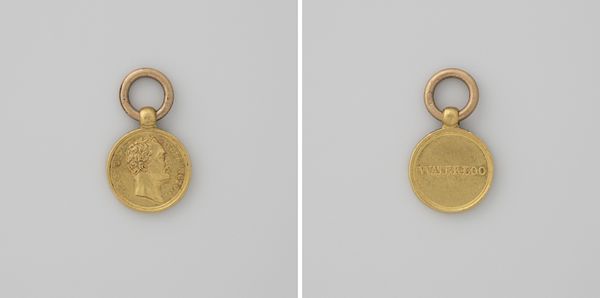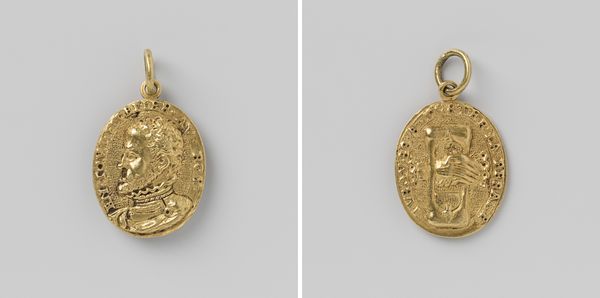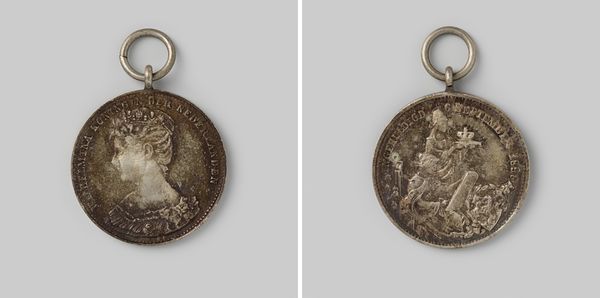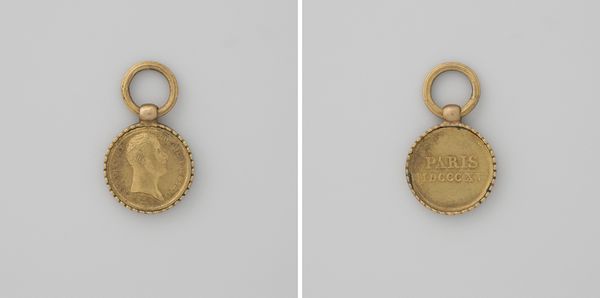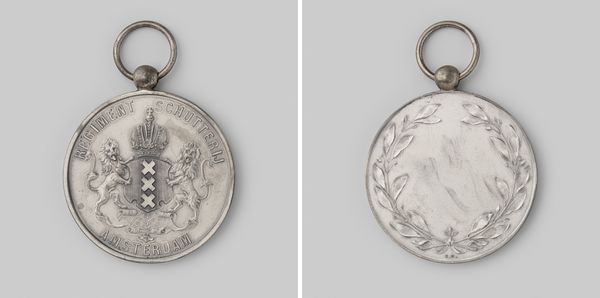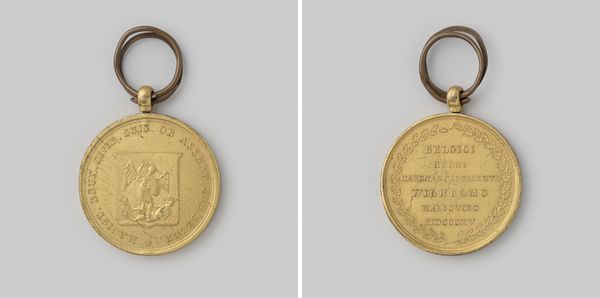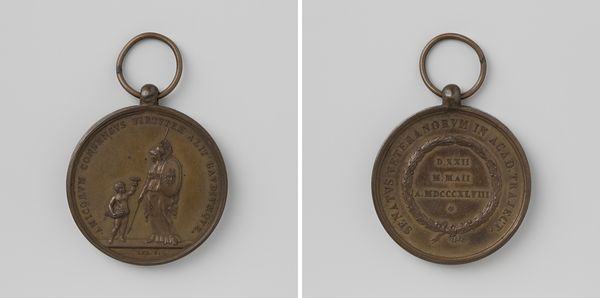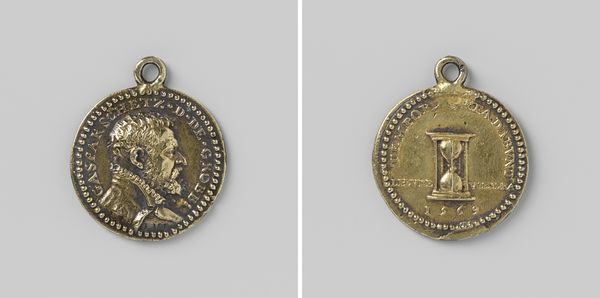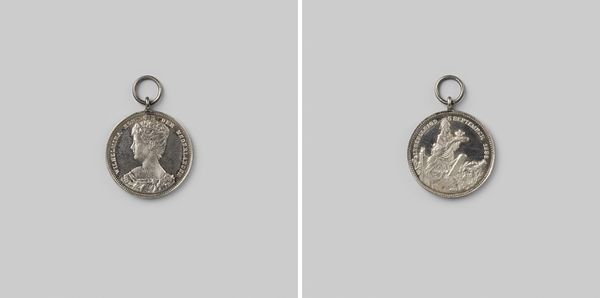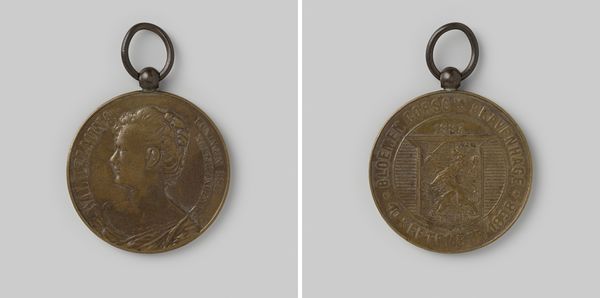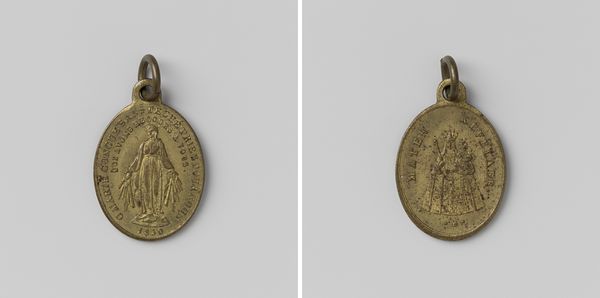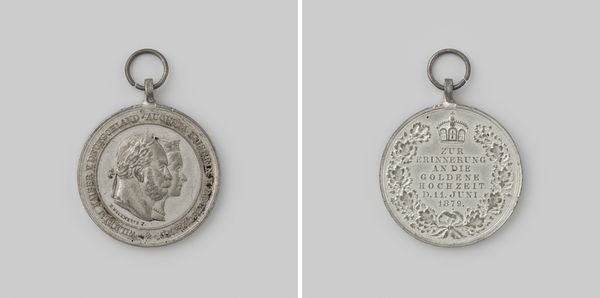
metal, relief, bronze
#
neoclacissism
#
metal
#
relief
#
bronze
#
history-painting
Dimensions: height 2.9 cm, height 2 cm, diameter 1.6 cm, weight 31 gr
Copyright: Rijks Museum: Open Domain
Curator: Here we have a bronze medal, dating from 1815. This piece, found here at the Rijksmuseum, is known as the "Veldtocht van 1815, penning uitgereikt aan de Pruissische soldaten" which translates to Campaign of 1815, a medal awarded to Prussian soldiers. Editor: It’s strange isn't it? So small, so self-contained, yet radiating a strange intensity... it almost hums. I get a sense of stern, rigid formality mixed with pride, like someone standing very straight with their chest puffed out just a bit. Curator: Indeed. If we consider the medal’s design, we see Neoclassical elements at play. The ordered arrangement of text, the clean lines, the use of symbolic elements like the wreath – all contribute to a sense of rational, structured authority. Editor: Exactly! The laurel wreath wrapped around a cross. This melding feels like power being softened just slightly by accomplishment and maybe even... divine right? But everything still feels so official. You imagine the clicking of polished boots and the endless repetition of military drills. Did many even *want* this, I wonder? Curator: Medals like these were instruments of state. It helped shape national identity after a tumultuous period and solidified allegiance to the Prussian crown. They were also inexpensive compared to monetary bonuses. The distribution created loyalty for relatively little cost. Editor: Cheap at any price, huh? Though, I suppose, for the individual soldier, this may have been the only acknowledgement they got. Maybe that made it invaluable? It's strange to think of all those unrecorded, ordinary moments adding up to this... *thing*. What happens when everyone involved is dead, and it's just an artifact in a case, viewed under glass? Curator: An excellent point. Over time, these objects become abstracted from the individual experiences, allowing us to view them as concentrated nodes of social and political intention. In terms of materiality, the patinated bronze presents a surface that invites both visual and tactile exploration. Editor: Oh, I agree, the surface tells its own story – a whisper of time passed. I wonder, would a recipient feel short-changed by its inexpensive design? Or grateful to just be alive enough to be honored by even this little medallion? Curator: It’s a reminder that even the smallest objects can carry enormous weight and history. Editor: Absolutely, a tiny lens through which to consider big histories, small victories.
Comments
No comments
Be the first to comment and join the conversation on the ultimate creative platform.
